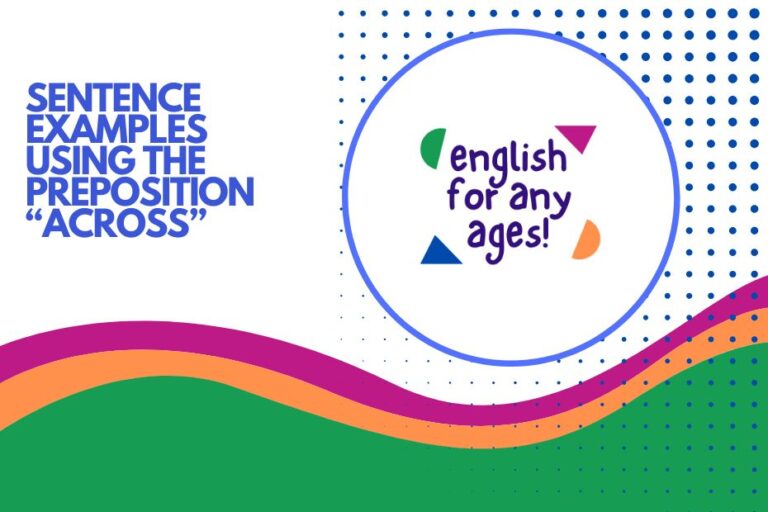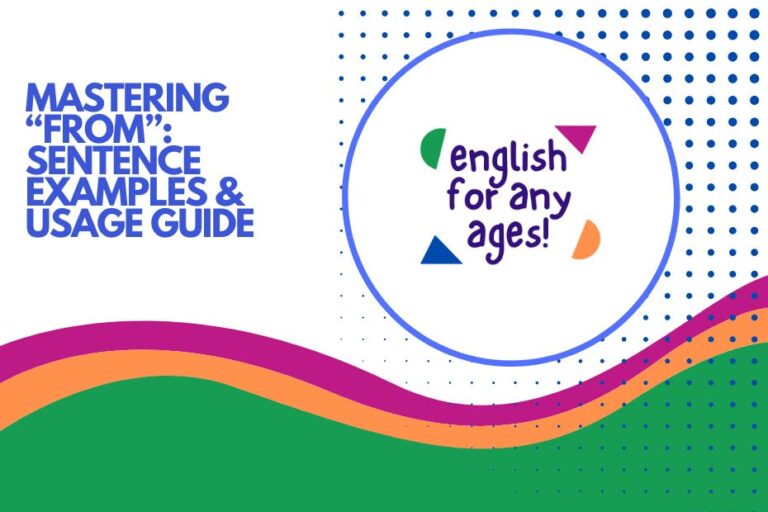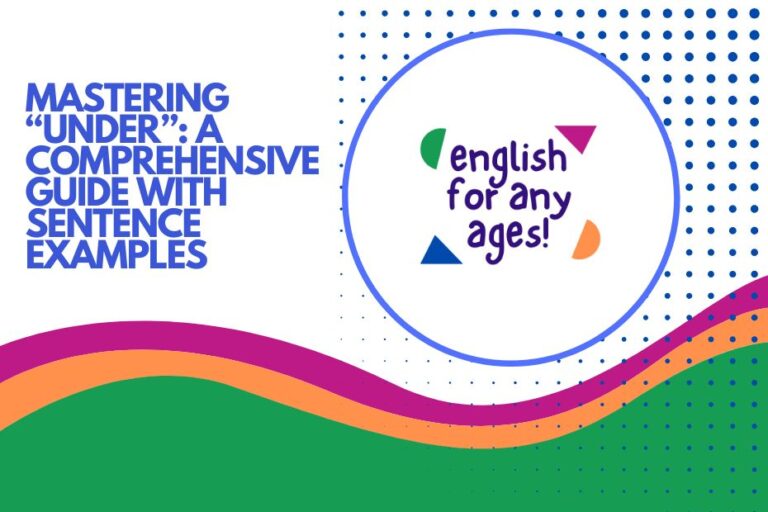Mastering “Blue Sky”: Grammar and Usage Guide
The phrase “blue sky” extends far beyond a simple weather descriptor. It has evolved into a versatile idiom used in business, creative thinking, and everyday conversation.
Understanding how to properly incorporate “blue sky” into your vocabulary can significantly enhance your communication skills and add depth to your descriptive language. This article provides a comprehensive guide, exploring the grammatical nuances, various applications, and common pitfalls associated with using “blue sky.” Whether you’re an ESL learner, a student aiming to improve your writing, or a professional looking to refine your communication, this guide will equip you with the knowledge and confidence to use “blue sky” effectively.
This article will delve into the different contexts in which “blue sky” can be used, from its literal meaning to its metaphorical applications. Through detailed explanations, numerous examples, and practical exercises, you’ll gain a thorough understanding of how to use “blue sky” correctly and creatively.
By the end of this guide, you’ll be able to confidently integrate “blue sky” into your writing and speech, adding nuance and sophistication to your communication.
Table of Contents
- Definition of “Blue Sky”
- Structural Breakdown
- Types and Categories of Usage
- Examples of “Blue Sky” in Sentences
- Usage Rules
- Common Mistakes
- Practice Exercises
- Advanced Topics
- Frequently Asked Questions
- Conclusion
Definition of “Blue Sky”
The term “blue sky” has both a literal and a figurative meaning. Literally, it refers to the clear, unobstructed view of the sky on a sunny day.
Figuratively, it represents boundless possibilities, unrestricted thinking, and innovative ideas, especially in business or creative contexts.
When used literally, “blue sky” functions as a noun phrase, often describing a weather condition. In its figurative sense, it can act as an adjective, modifying nouns like “thinking,” “research,” or “ideas,” or it can be part of an idiom, such as “blue-sky thinking.”
Literal Definition
The literal definition of “blue sky” is straightforward: it is the sky’s appearance when there are no clouds or other obstructions to visibility, typically on a sunny day. In this context, it is used to describe the weather or the visual scene.
Figurative Definition
The figurative definition of “blue sky” is more nuanced. It signifies unrestricted, creative thinking without limitations or practical constraints.
It often refers to brainstorming sessions or projects where the goal is to explore innovative ideas without being bogged down by feasibility concerns.
Structural Breakdown
The structure of “blue sky” varies depending on whether it’s used literally or figuratively. In its literal form, it’s a simple noun phrase.
In its figurative form, it can be part of a compound adjective or an idiom.
Literal Use
When used literally, “blue sky” typically appears as a noun phrase in sentences that describe the weather or scenery. It can be the subject, object, or part of a prepositional phrase.
Examples of structural usage:
- Subject: The blue sky was a welcome sight after days of rain.
- Object: We enjoyed the view of the blue sky.
- Prepositional phrase: Under the blue sky, we felt a sense of freedom.
Figurative Use
When used figuratively, “blue sky” often functions as an adjective modifying another noun. It can also be part of the idiom “blue-sky thinking,” which refers to brainstorming without constraints.
Examples of structural usage:
- Adjective: The company encouraged blue-sky research.
- Idiom: We need to engage in some blue-sky thinking to solve this problem.
Types and Categories of Usage
“Blue sky” can be categorized based on its context and function in a sentence. Understanding these categories will help you use the term more accurately and effectively.
Literal Description
This category involves using “blue sky” to describe the actual appearance of the sky. It is often used in weather reports, landscape descriptions, or personal narratives.
Figurative Adjective
In this category, “blue sky” acts as an adjective, modifying nouns to indicate unrestricted or innovative thinking. It is common in business, research, and creative fields.
Idiomatic Expression
The most common idiomatic expression is “blue-sky thinking,” which represents brainstorming or idea generation without limitations. It is often used in business strategy and innovation discussions.
Examples of “Blue Sky” in Sentences
The following tables provide numerous examples of “blue sky” used in different contexts. Each table focuses on a specific category of usage, illustrating how the term can be incorporated into various sentence structures.
Examples of Literal Usage
The following table showcases instances where “blue sky” is used to literally describe the sky.
| Sentence | Context |
|---|---|
| The blue sky stretched endlessly above us, a canvas of pure azure. | Describing a clear sky. |
| After the storm, the blue sky was a welcome change. | Weather change. |
| We gazed up at the blue sky, dotted with fluffy white clouds. | Describing clouds in the sky. |
| The airplane soared through the blue sky. | Describing an airplane flight. |
| Children pointed at the blue sky, excited to see a rainbow. | Describing a rainbow. |
| The deep blue sky contrasted beautifully with the golden fields. | Describing a landscape. |
| I love to lie on the grass and look up at the blue sky. | Personal preference. |
| The blue sky provided a perfect backdrop for the wedding photos. | Describing a backdrop. |
| The kite danced merrily in the blue sky. | Describing a kite flying. |
| Birds chirped happily under the blue sky. | Describing birds. |
| The hot air balloon drifted lazily across the blue sky. | Describing a hot air balloon. |
| The sun shone brightly in the blue sky. | Describing the sun. |
| From the mountaintop, the blue sky seemed within reach. | Describing a view from a mountaintop. |
| The artist painted a vibrant blue sky in her landscape. | Describing an artwork. |
| Sailboats glided smoothly beneath the blue sky. | Describing sailboats. |
| The weather forecast predicted a day of blue sky and sunshine. | Weather forecast. |
| We enjoyed a picnic under the vast blue sky. | Describing a picnic. |
| The blue sky reflected in the clear lake. | Describing a reflection. |
| Farmers welcomed the blue sky after a week of rain. | Describing farmers’ reaction. |
| The open-air concert was perfect with the blue sky as a natural ceiling. | Describing a concert. |
| The paraglider floated gently across the blue sky. | Describing paragliding. |
| The brilliant blue sky made the autumn colors even more vibrant. | Describing autumn colors. |
| Tourists flocked to the beach to enjoy the blue sky and warm sun. | Describing a beach scene. |
| The photographer captured the beauty of the blue sky at dawn. | Describing photography. |
| The rooftop terrace offered stunning views of the blue sky. | Describing a view from a rooftop. |
Examples of Figurative Usage (Adjective)
This table demonstrates how “blue sky” can be used as an adjective, modifying nouns to suggest innovative or unrestricted ideas.
| Sentence | Context |
|---|---|
| The company is investing in blue-sky research to develop groundbreaking technologies. | Describing research. |
| We need to come up with some blue-sky ideas to revitalize the project. | Describing ideas. |
| The university encourages blue-sky thinking among its students. | Describing thinking. |
| The project team was given the freedom to pursue blue-sky concepts. | Describing concepts. |
| The workshop focused on generating blue-sky solutions for the problem. | Describing solutions. |
| The CEO challenged the team to develop blue-sky strategies. | Describing strategies. |
| The innovation lab is dedicated to blue-sky development. | Describing development. |
| The foundation supports blue-sky initiatives in education. | Describing initiatives. |
| The artist is known for his blue-sky visions of the future. | Describing visions. |
| The conference encouraged blue-sky discussions about climate change. | Describing discussions. |
| The entrepreneur is famous for his blue-sky approach to business. | Describing an approach. |
| The government is funding blue-sky projects in renewable energy. | Describing projects. |
| The scientist is pursuing blue-sky experiments in her lab. | Describing experiments. |
| The engineer is known for his blue-sky designs. | Describing designs. |
| The author is exploring blue-sky narratives in her new book. | Describing narratives. |
| The architect presented blue-sky plans for the new city. | Describing plans. |
| The marketing team developed blue-sky campaigns to attract new customers. | Describing campaigns. |
| The software company is investing in blue-sky technology. | Describing technology. |
| The think tank is exploring blue-sky possibilities for the future. | Describing possibilities. |
| The non-profit organization is promoting blue-sky programs in underserved communities. | Describing programs. |
| The research center is conducting blue-sky investigations into new materials. | Describing investigations. |
| The consulting firm specializes in blue-sky consulting. | Describing consulting. |
| The startup is focused on blue-sky innovations in the healthcare industry. | Describing innovations. |
| The arts council is funding blue-sky endeavors in the local community. | Describing endeavors. |
| The think tank is dedicated to blue-sky forecasting. | Describing forecasting. |
Examples of Idiomatic Usage (“Blue-Sky Thinking”)
This table provides examples of the idiom “blue-sky thinking” in sentences, illustrating how it conveys the concept of unrestricted brainstorming.
| Sentence | Context |
|---|---|
| We need to engage in some blue-sky thinking to find a solution to this complex problem. | Problem-solving. |
| The workshop encouraged participants to embrace blue-sky thinking. | Workshop setting. |
| The team was asked to use blue-sky thinking to develop innovative products. | Product development. |
| Blue-sky thinking is essential for creating disruptive technologies. | Technology innovation. |
| The company promotes blue-sky thinking to foster creativity. | Company culture. |
| Let’s set aside practical constraints and engage in some blue-sky thinking. | Removing limitations. |
| The consultant suggested blue-sky thinking to improve the company’s strategy. | Strategic planning. |
| The conference featured sessions on blue-sky thinking and innovation. | Conference topic. |
| Blue-sky thinking can lead to unexpected breakthroughs. | Breakthrough discoveries. |
| The professor encouraged his students to use blue-sky thinking in their research. | Academic research. |
| The brainstorming session was all about blue-sky thinking. | Brainstorming session. |
| The manager asked the team to apply blue-sky thinking to the marketing campaign. | Marketing strategy. |
| Blue-sky thinking is often the first step in developing new ideas. | Idea generation. |
| We need to move beyond traditional approaches and embrace blue-sky thinking. | Adopting new approaches. |
| The entrepreneur used blue-sky thinking to create a successful business. | Business success. |
| The artist’s work is characterized by blue-sky thinking and imagination. | Artistic expression. |
| The inventor applied blue-sky thinking to solve a long-standing problem. | Problem-solving. |
| The organization promotes blue-sky thinking to address social issues. | Addressing social issues. |
| The scientist’s blue-sky thinking led to a groundbreaking discovery. | Scientific discovery. |
| The architect’s designs reflected a commitment to blue-sky thinking. | Architectural design. |
| The planning committee encouraged blue-sky thinking when designing the new park. | Urban planning. |
| The design team embraced blue-sky thinking to create a revolutionary product. | Product design. |
| In order to solve the crisis, we need to engage in some serious blue-sky thinking. | Crisis management. |
| The educational program promotes blue-sky thinking to empower students. | Educational initiatives. |
| The innovation summit was dedicated to fostering blue-sky thinking. | Innovation summit. |
Usage Rules
Using “blue sky” correctly involves understanding its various forms and contexts. Here are some essential rules to follow:
Literal Usage Rules
- When describing the sky, “blue sky” is typically used as a noun phrase.
- Ensure the context makes it clear that you are referring to the actual sky and not a metaphorical concept.
Figurative Usage Rules
- When used as an adjective, “blue-sky” is hyphenated.
- When using the idiom “blue-sky thinking,” maintain the hyphen and ensure it refers to unrestricted brainstorming.
- Be mindful of the audience and context to ensure the figurative meaning is understood.
General Guidelines
- Avoid overuse of “blue sky” to prevent it from losing its impact.
- Consider the tone of your writing or speech and use “blue sky” appropriately.
Common Mistakes
Here are some common mistakes people make when using “blue sky,” along with corrections:
| Incorrect | Correct | Explanation |
|---|---|---|
| The company encouraged blue sky research. | The company encouraged blue-sky research. | “Blue-sky” should be hyphenated when used as an adjective. |
| We need to do some blue sky thinking. | We need to do some blue-sky thinking. | “Blue-sky thinking” is a fixed idiom and should be hyphenated. |
| The blue sky ideas were innovative. | The blue-sky ideas were innovative. | “Blue-sky” should be hyphenated when used as an adjective before a noun. |
| The sky was very bluesky today. | The sky was very blue today. | “Bluesky” is not a single-word adjective in this context. |
| He proposed a bluesky solution. | He proposed a blue-sky solution. | “Blue-sky” should be hyphenated when used as an adjective. |
Practice Exercises
Test your understanding of “blue sky” with these practice exercises. Each exercise focuses on a different aspect of its usage.
Exercise 1: Literal vs. Figurative
Identify whether “blue sky” is used literally or figuratively in each sentence.
| Question | Answer |
|---|---|
| 1. The blue sky was a perfect backdrop for the fireworks display. | Literal |
| 2. The company needs some blue-sky ideas to stay competitive. | Figurative |
| 3. We enjoyed a picnic under the clear blue sky. | Literal |
| 4. The team engaged in blue-sky thinking to develop a new product. | Figurative |
| 5. The deep blue sky made the autumn leaves look even more vibrant. | Literal |
| 6. They are investing in blue-sky research to find a cure for the disease. | Figurative |
| 7. We spent the afternoon watching the clouds drift across the blue sky. | Literal |
| 8. The architect presented blue-sky plans for the new museum. | Figurative |
| 9. The kite soared high in the blue sky. | Literal |
| 10. The workshop was designed to promote blue-sky thinking. | Figurative |
Exercise 2: Fill in the Blanks
Fill in the blanks with the correct form of “blue sky” (blue sky, blue-sky, blue-sky thinking).
| Question | Answer |
|---|---|
| 1. The ________ was a welcome sight after days of rain. | blue sky |
| 2. The company is encouraging ________ to develop innovative solutions. | blue-sky thinking |
| 3. The ________ research led to a breakthrough discovery. | blue-sky |
| 4. We need to come up with some ________ ideas to revitalize the project. | blue-sky |
| 5. The conference focused on ________ and innovation. | blue-sky thinking |
| 6. The ________ provided a stunning backdrop for the wedding photos. | blue sky |
| 7. The project team was given the freedom to pursue ________ concepts. | blue-sky |
| 8. The workshop encouraged participants to embrace ________. | blue-sky thinking |
| 9. The deep ________ made the autumn leaves look even more vibrant. | blue sky |
| 10. They are investing in ________ research to find a cure for the disease. | blue-sky |
Exercise 3: Sentence Correction
Correct the following sentences that use “blue sky” incorrectly.
| Incorrect Sentence | Correct Sentence |
|---|---|
| 1. We need more bluesky ideas. | We need more blue-sky ideas. |
| 2. The sky was very bluesky. | The sky was very blue. |
| 3. They are doing blue sky thinking. | They are doing blue-sky thinking. |
| 4. The company supports bluesky research. | The company supports blue-sky research. |
| 5. He proposed a bluesky solution to the problem. | He proposed a blue-sky solution to the problem. |
| 6. The bluesky was a beautiful sight. | The blue sky was a beautiful sight. |
| 7. Let’s engage in some real bluesky thinking. | Let’s engage in some real blue-sky thinking. |
| 8. The university offers bluesky courses. | The university offers blue-sky courses. |
| 9. The blue skythinking was very helpful. | The blue-sky thinking was very helpful. |
| 10. We enjoyed the bluesky. | We enjoyed the blue sky. |
Advanced Topics
For advanced learners, understanding the nuances of “blue sky” in different contexts can further enhance their language skills.
Subtle Connotations
“Blue sky” can sometimes imply a sense of idealism or impracticality, especially when used in business or strategic planning. It’s important to be aware of this connotation and use the term judiciously, ensuring that it doesn’t undermine the credibility of your ideas.
Cultural Variations
While the concept of “blue sky thinking” is widely understood in English-speaking cultures, its interpretation and application may vary across different countries and industries. Being aware of these cultural nuances can help you communicate more effectively in international settings.
Synonyms and Alternatives
To avoid overuse and add variety to your language, consider using synonyms and alternatives for “blue sky,” such as: innovative, visionary, creative, imaginative, and unconventional. These terms can convey similar meanings while adding depth to your writing and speech.
Frequently Asked Questions
Here are some frequently asked questions about using “blue sky,” along with detailed answers:
- What is the origin of the term “blue sky”?
The term “blue sky” likely originated from the literal image of a clear, unobstructed sky, symbolizing limitless possibilities and freedom. Over time, this imagery was adopted metaphorically to represent boundless creativity and innovative thinking.
- Is it always necessary to hyphenate “blue sky” when used as an adjective?
Yes, when “blue sky” is used as an adjective modifying a noun (e.g., “blue-sky research,” “blue-sky ideas”), it should always be hyphenated. This helps to clarify that it’s a compound adjective describing the noun.
- Can “blue sky thinking” be used in formal writing?
While “blue-sky thinking” is a widely recognized idiom, its appropriateness in formal writing depends on the context and audience. In highly formal or academic settings, it may be preferable to use more formal synonyms like “innovative thinking” or “unconventional brainstorming.” However, in business reports or creative proposals, it can be perfectly acceptable.
- What are some common alternatives to “blue-sky thinking”?
Some common alternatives to “blue-sky thinking” include: innovative brainstorming, creative problem-solving, visionary planning, and imaginative thinking. These terms can provide variety and nuance to your language while conveying similar meanings.
- How can I avoid overusing “blue sky” in my writing?
To avoid overuse, be mindful of how frequently you’re using the term and actively seek out synonyms and alternatives. Also, consider whether the concept of “blue sky” is truly the most accurate and effective way to describe the situation. Sometimes, more specific and descriptive language can be more impactful.
- Is “blue sky” used in other languages besides English?
The literal concept of a blue sky is universal, but the figurative use of “blue sky” as an idiom is primarily English. Other languages may have similar idioms that convey the idea of limitless possibilities or creative thinking, but they will likely use different words and phrases.
- What is the difference between “blue-sky research” and regular research?
“Blue-sky research” typically refers to research projects that are exploratory and open-ended, with no specific goals or immediate applications in mind. It’s often focused on fundamental scientific principles and long-term technological advancements. Regular research, on the other hand, is often more targeted and focused on solving specific problems or developing practical solutions.
- How can I encourage “blue-sky thinking” in a team setting?
To encourage “blue-sky thinking” in a team setting, create a safe and supportive environment where team members feel comfortable sharing unconventional ideas without fear of criticism. Facilitate brainstorming sessions that encourage free-flowing discussions and discourage premature judgment. Also, provide team members with the time and resources they need to explore new ideas and experiment with different approaches.
Conclusion
Understanding how to use “blue sky” effectively can significantly enhance your communication skills. Whether you’re describing a clear sky or brainstorming innovative ideas, mastering the nuances of this term can add depth and sophistication to your language.
By following the rules and guidelines outlined in this article, you can confidently incorporate “blue sky” into your writing and speech.
Remember to practice using “blue sky” in different contexts and to be mindful of its connotations and cultural variations. With consistent effort and attention to detail, you’ll be able to leverage the power of “blue sky” to express your ideas more clearly and creatively.
Embrace the boundless possibilities that “blue-sky thinking” represents, and let your imagination soar!






